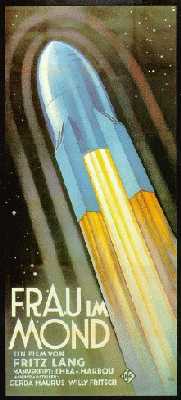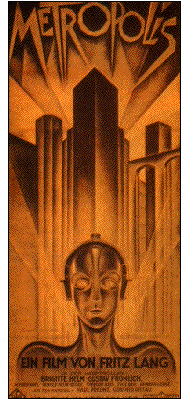Difference between revisions of "Fritz Lang"
| Line 4: | Line 4: | ||
{| id="lang" | {| id="lang" | ||
|- | |- | ||
| − | | [[image:frau-im-mond.jpg|center]] || [[image:metropolis. | + | | [[image:frau-im-mond.jpg|center]] || [[image:metropolis.gif|center]] |
|- | |- | ||
|This is the original poster for ''Frau im Mond'' (''Woman in the Moon''), directed by Fritz Lang and released in 1929. | |This is the original poster for ''Frau im Mond'' (''Woman in the Moon''), directed by Fritz Lang and released in 1929. | ||
Revision as of 23:36, 5 December 2006
Fritz Lang was an Austrian-born American film director, born in Vienna and educated there at the College of Technical Sciences and the Academy of Graphic Arts. He wanted to become a painter but in 1919 joined the Decla Film Company. In 1926 in Berlin he directed two Dr. Mabuse films, and Metropolis, a nightmare of the future where a large section of the population is reduced to slavery. When Hitler came to power in 1933, Goebbels, a fan of Lang's films, asked Lang to make propaganda films for the Nazis. Lang refused and immediately fled to Paris and then to the U.S. He died in Beverly Hills, California.
This is the original poster for Frau im Mond (Woman in the Moon), directed by Fritz Lang and released in 1929.
|
This is the original poster for Metropolis, directed by Fritz Lang and released in 1926.
|

